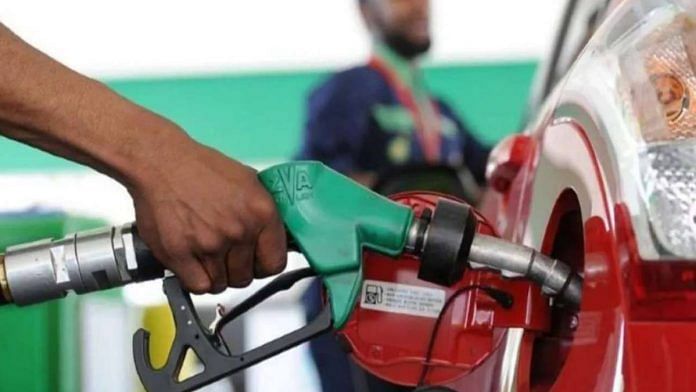Two ‘E’ words underlined the theme of the recently concluded Auto Expo 2023 in Greater Noida. The first was, of course, ‘Electric’. Almost every pavilion and stall you walked into had an electric vehicle—from futuristic concepts like the Maruti-Suzuki EVX, Hyundai’s very real Ioniq 5, to production-ready models from Tata Motors. On the upper floor of the India Expo Mart, the two-wheeler and commercial vehicle areas were pretty much only about EVs too.
But the second ‘E’ will make an immediate difference to your life, and that ‘E’ is ‘Ethanol’. There was a whole pavilion dedicated to vehicles running on Ethanol at the Auto Expo. But why? Because this government has made ethanol blending in petrol one of its priority areas that would help the country’s agricultural sector. This is likely to substitute and curtail crude oil imports from the Arabian peninsula and elsewhere.
The regular petrol you fill in your cars today is something called E10, a blend of up to 10 per cent ethanol with petrol. But in the coming months, the government wants carmakers to make their new vehicles compatible with E20, which, quite obviously, is a blend of petrol and 20 per cent ethanol. But this raises several technical issues.
Also read:
The alternative fuel challenge
If you remember your high-school chemistry, you would know that alcohols like ethanol are solvents that can be highly corrosive to metals. While E10 blends have caused no significant issues in current vehicles, minor but essential modifications are required for internal-combustion engines to run E20 blends. These changes are essentially on the engine’s rubber and plastic tubings and lubricating oils.
While a current engine could run E20 fuel in a pinch, extended use could lead to leaking pipes and damaged parts. Formula 1 fans would know that the Honda powertrains on Red Bull racing cars faced some issues early in the 2022 season, as the higher proportion of ethanol in the fuel used this year led to problems with fuel pipes and other minor components.
E20 fuel could be coming to a petrol pump near you—particularly in metropolitan areas—sooner than you think. That is precisely why large manufacturers like Maruti-Suzuki have said that all the cars they sell will be E20 compliant from 1 April 2023. E20 fuel, like premium high-octane petrol, will likely need to be sold from a separate dispensing unit. Incidentally, If you want your car to live on unblended petrol, you should fill some of this branded petrol now.
Also read:
E20 just the beginning
E20 is just the start. Inspired by Brazil, the Indian government wants to move to Flex Fuel Vehicles or FFVs. These vehicles can run on an ethanol-petrol blend of up to 85 per cent, aka E85 fuel. Such FFVs will require much more complex engineering, though. According to a senior technical director at a car company, the switch to FFV will require changes to fuel plumbing and many of the moving parts of an internal combustion engine, such as pistons and valves.
FFVs, though, do run in Brazil, and while some food security activists have condemned them because foodgrains used to make ethanol are diverted from human and animal consumption to fuel production, others like road transport and highways minister Nitin Gadkari are of a different view. Gadkari argues that the excess food grain and sugar stock used to make blendable ethanol will give farmers an alternate income stream. India, after all, grows
enough food grain. However, global events like the war in Ukraine, which has upended wheat and sunflower oil seed supply globally, should be a cautionary tale for policymakers. Moreover, sugarcane, the main feedstock for ethanol, is a heavy consumer of water, and India, unlike Brazil, has a severe groundwater crisis.
Even in Brazil, environmental activists have raised serious questions about increased sugarcane farming leading to deforestation of the Amazon. And then there is another major issue—calorific value. The fact is that ethanol packs less punch than petrol, 20 per cent less. Engines that run on blends of ethanol and petrol will produce less power than an engine running on pure petrol, just like higher octane ratings of petrol produce more power than lower octane ratings. That said, if higher blends of ethanol and petrol, starting from E20, are slightly cheaper than regular fuel, it could encourage car and motorcycle users to make the switch. Especially since the Narendra Modi-led Cabinet Committee for Economic Affairs has announced that ethanol will be procured for Rs 65.61 per litre. This price will make ethanol production by distillers profitable and justify a high Minimum Support Price (MSP) for farmers.
It would be perverse to charge similar amounts for regular and ethanol-blended petrol, but stranger things have happened in India. A discount on ethanol-blended fuels will encourage car buyers to give up petrol and diesel-powered vehicles for FFVs. Such discounts did wonders for diesel adoption in India in the mid-2000s.
Long story short, the government is keen to increase ethanol usage in vehicles in India, and the industry, particularly carmakers, is making those changes. In the two and three-wheeler industry, the shift toward electrification is increasing. But EVs still cost a significant premium over regular internal combustion engine vehicles. The increased cost is unviable for most car owners in India, who do not drive more than 10,000 kilometres annually. The path to lowering emissions and managing our crude import bill will be through ethanol blending. But the path might not be one that car owners (or oil marketing companies, for that matter) find easy to shift onto.
@kushanmitra is an automotive journalist based in New Delhi. He was one of the jury members on the ICOTY panel. Views are personal.
(Edited by Zoya Bhatti)



